Top Workplace Safety Trends to Watch in 2025: Leveraging AI for Safer Workplaces

See It In Action

AI-Powered PPE Compliance Monitoring
See how AI automatically detects PPE compliance violations in real-time
Example Videos
AI-Powered PPE Compliance Monitoring
See how AI automatically detects PPE compliance violations in real-time
Forklift Safety Monitoring in Action
AI system detecting potential collision risks between forklifts and pedestrians
Key Takeaways
-
AI-Powered Monitoring: Real-time detection systems are revolutionizing how companies identify and address workplace hazards.
-
Predictive Safety Analytics: Advanced algorithms now forecast potential incidents before they occur, enabling truly preventive safety measures.
-
Behavioral Safety Focus: AI tools are identifying and correcting unsafe worker behaviors that traditional methods often miss.
-
Seamless Integration: Modern safety solutions work with existing infrastructure, minimizing implementation costs and disruption.
-
Mental Health Considerations: Workplace safety is expanding to include employee mental wellbeing as a critical safety factor.
-
Customizable Solutions: The most effective safety systems adapt to industry-specific needs and unique workplace environments.
Introduction: The Evolution of AI for Safer Workplaces
What comes to mind when you hear "AI for Safer Workplaces"? In 2025, workplace safety has evolved far beyond simply meeting compliance standards—it's about creating environments where risks are actively prevented, workers are comprehensively safeguarded, and operational efficiency is maximized.
Artificial intelligence has fundamentally reinvented workplace safety by shifting the focus from reactive measures to proactive, data-driven strategies. With tools like real-time monitoring, predictive insights, and behavioral tracking, businesses now have the ability to anticipate and address risks before they escalate into incidents.
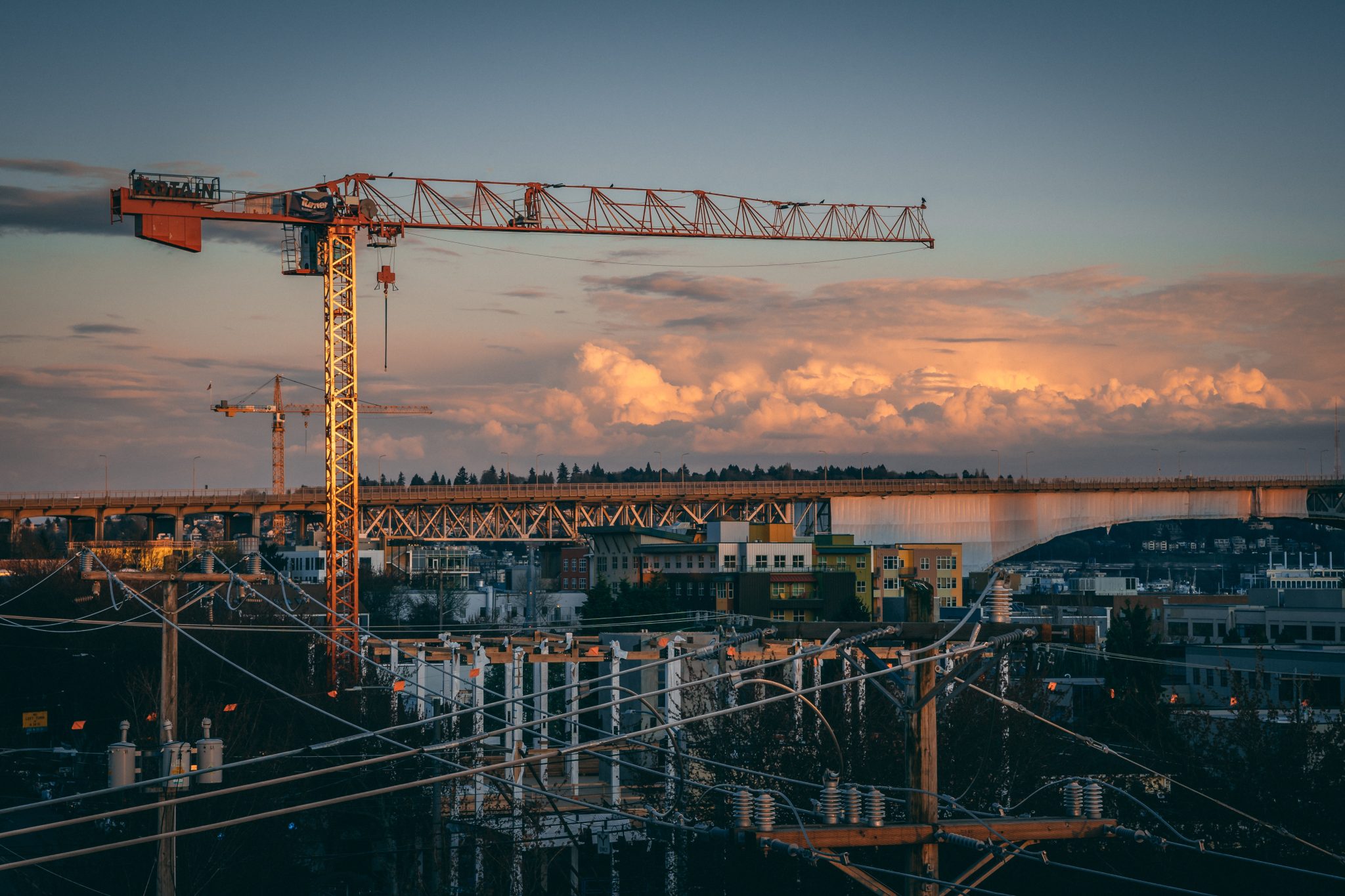 AI technology monitoring workplace safety conditions in real-time
AI technology monitoring workplace safety conditions in real-time
The year ahead promises significant advancements in behavioral monitoring, predictive analytics, and seamless integration with IoT devices, opening up new possibilities for safer and more efficient workspaces. Companies that adopt these innovations will not only enhance safety but also build a culture of accountability and proactive management.
In this article, we'll explore the key AI trends set to define workplace safety in 2025 and examine how Visionify is leading this transformation toward smarter, safer workplaces.
Top 11 Workplace Safety Trends for 2025
1. Real-Time Monitoring for Risk Prevention
In today's fast-paced industries, the ability to detect and address safety risks instantly has become non-negotiable. Real-time monitoring enables organizations to spot hazards or unsafe behavior as they happen, significantly reducing accidents and improving response times.
Key AI-driven real-time solutions include:
-
PPE Compliance Monitoring: Ensures workers are properly equipped with essential protective gear by identifying non-compliance and notifying supervisors immediately.
-
Slip and Fall Detection: Quickly identifies incidents where a worker has slipped or fallen, allowing teams to respond without delay.
-
Forklift Safety Monitoring: Tracks forklifts and pedestrians, sending alerts when their proximity indicates a potential collision risk.
2. Predictive Analytics for Safety Management
The ability to predict and prevent risks before they occur is transforming workplace safety. By analyzing patterns and trends, predictive analytics equips organizations with the insights needed to identify potential hazards and make data-driven decisions.
Predictive safety applications include:
-
Risk Forecasting: Identifies high-risk areas or activities based on historical data and current conditions.
-
Maintenance Prediction: Anticipates equipment failures before they create safety hazards.
-
Incident Probability Mapping: Creates visual representations of where accidents are most likely to occur.
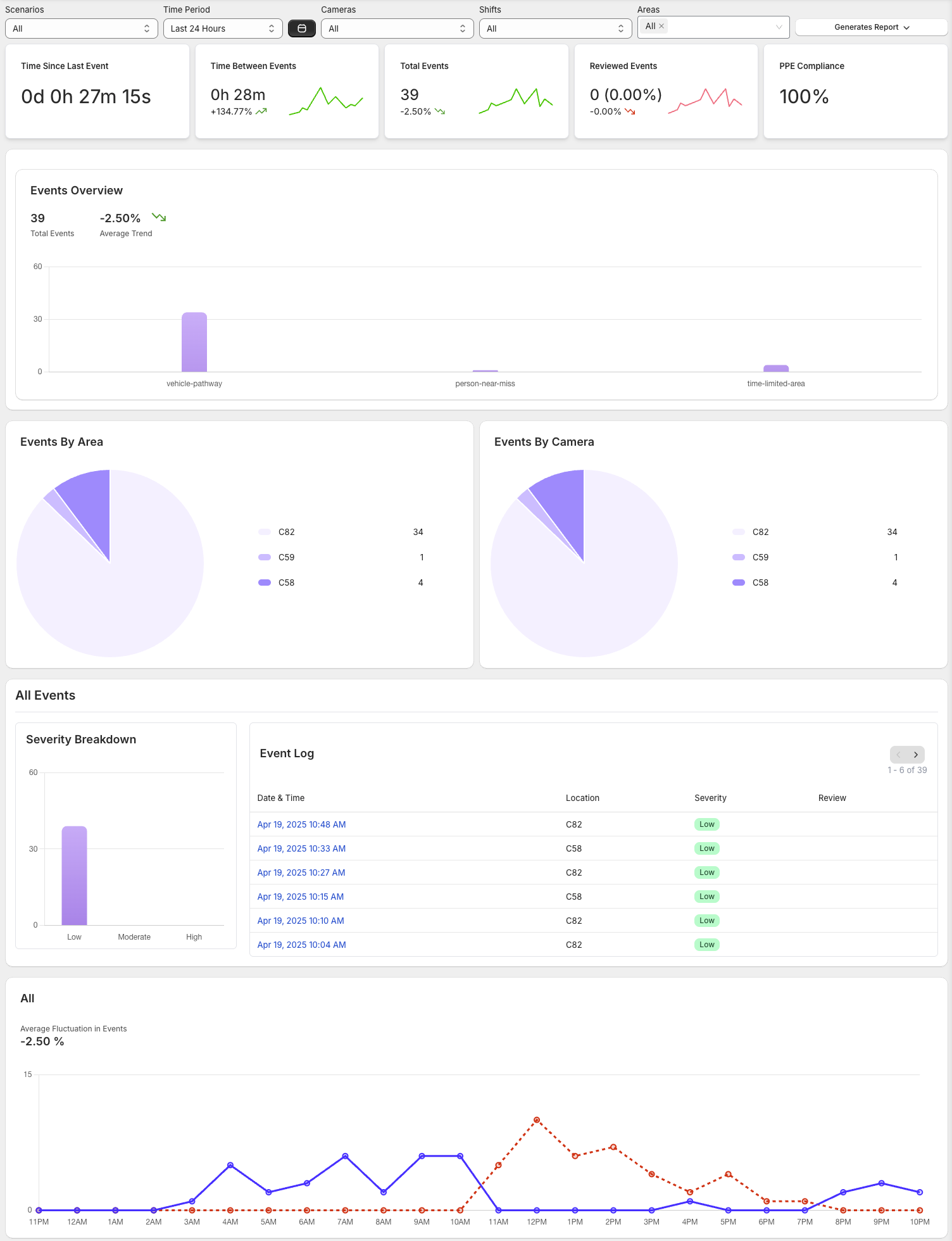 Predictive analytics dashboard showing safety risk forecasting
Predictive analytics dashboard showing safety risk forecasting
3. Customizable Safety Dashboards
Customizable dashboards deliver in-depth analytics on recurring safety issues, high-risk areas, and employee behavior. These insights allow managers to refine safety protocols, allocate resources more effectively, and reduce risks before they escalate.
Dashboard capabilities include:
-
Real-time safety metrics that provide at-a-glance status of workplace conditions
-
Customizable alerts based on specific safety parameters and thresholds
-
Trend analysis that identifies patterns in safety incidents over time
This represents a powerful shift from reactive management to proactive planning.
4. AI-Driven Behavioral Safety
Addressing unsafe behaviors is crucial to creating a truly secure workplace. From distracted phone use to ignoring safety protocols, many accidents stem from habits that can be corrected with the right tools. AI makes it possible to detect and address these behaviors with precision.
Behavioral monitoring tools include:
-
Mobile Phone Usage Detection: Identifies when workers use phones in restricted zones, ensuring focus and reducing distractions.
-
Staircase Safety Monitoring: Monitors stairways for unsafe actions like skipping steps or running, providing real-time alerts to supervisors.
-
Ergonomic Movement Analysis: Detects improper lifting techniques or postures that could lead to injuries.
These solutions focus on promoting accountability and improving safety by addressing behaviors that often go unnoticed in traditional safety programs.
5. Sustainability and Safety Integration
As industries push toward sustainable practices, workplace safety is being integrated into broader environmental goals. Monitoring tools now assess safety alongside sustainability metrics, such as energy efficiency or waste reduction.
Key developments include:
-
AI tools that measure both safety and environmental performance, helping organizations meet dual objectives
-
Increased focus on sustainable safety solutions, such as using energy-efficient monitoring systems
-
Safety protocols that incorporate environmental considerations, creating a more holistic approach
6. Workplace Density and Occupancy Management
Maintaining optimal worker density in specific areas is critical for both safety and efficiency. Overcrowding can lead to accidents, while understaffing in high-risk zones may jeopardize operations. Real-time occupancy monitoring addresses these challenges head-on.
Occupancy management solutions include:
-
Station Occupancy Monitoring: Tracks the number of workers in designated areas to ensure compliance with safety and operational standards.
-
Worker Count Solutions: Monitors minimum and maximum thresholds, alerting teams when staffing levels fall outside of safe ranges.
-
Zone-Based Density Control: Manages worker distribution across different facility areas to optimize both safety and productivity.
These tools not only mitigate risks but also enhance productivity by ensuring the right balance of personnel in every zone.
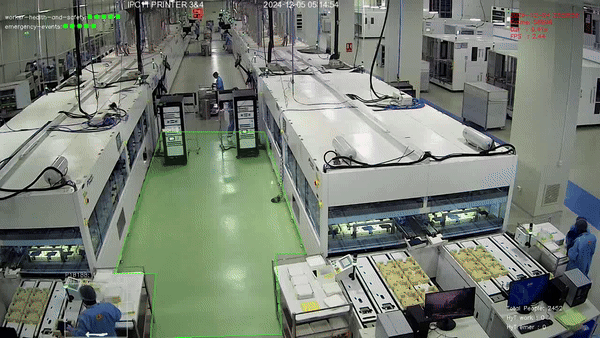 PPE compliance through Vision AI
PPE compliance through Vision AI
7. Integration of IoT with Vision AI
The convergence of IoT and Vision AI is transforming workplace safety. By combining IoT sensors with AI-driven applications, organizations can achieve comprehensive monitoring and smarter automation for a safer work environment.
Integration benefits include:
-
Enhanced Data Collection: IoT sensors provide additional environmental data that complements visual information from AI systems.
-
Automated Safety Responses: Connected systems can trigger automatic interventions when hazards are detected.
-
Comprehensive Monitoring: The combination of technologies provides more complete coverage of workplace conditions.
8. Mental Health and Wellness in Safety Strategies
Workplace safety is expanding beyond physical risks to include employee mental health and well-being. Stress, burnout, and fatigue are increasingly recognized as factors that can contribute to accidents or reduced productivity.
Key developments include:
-
Employers prioritizing stress management and wellness programs as part of their safety protocols
-
AI tools being developed to monitor behavioral indicators of stress or fatigue and alert managers in real time
-
Integration of mental health considerations into overall safety risk assessments
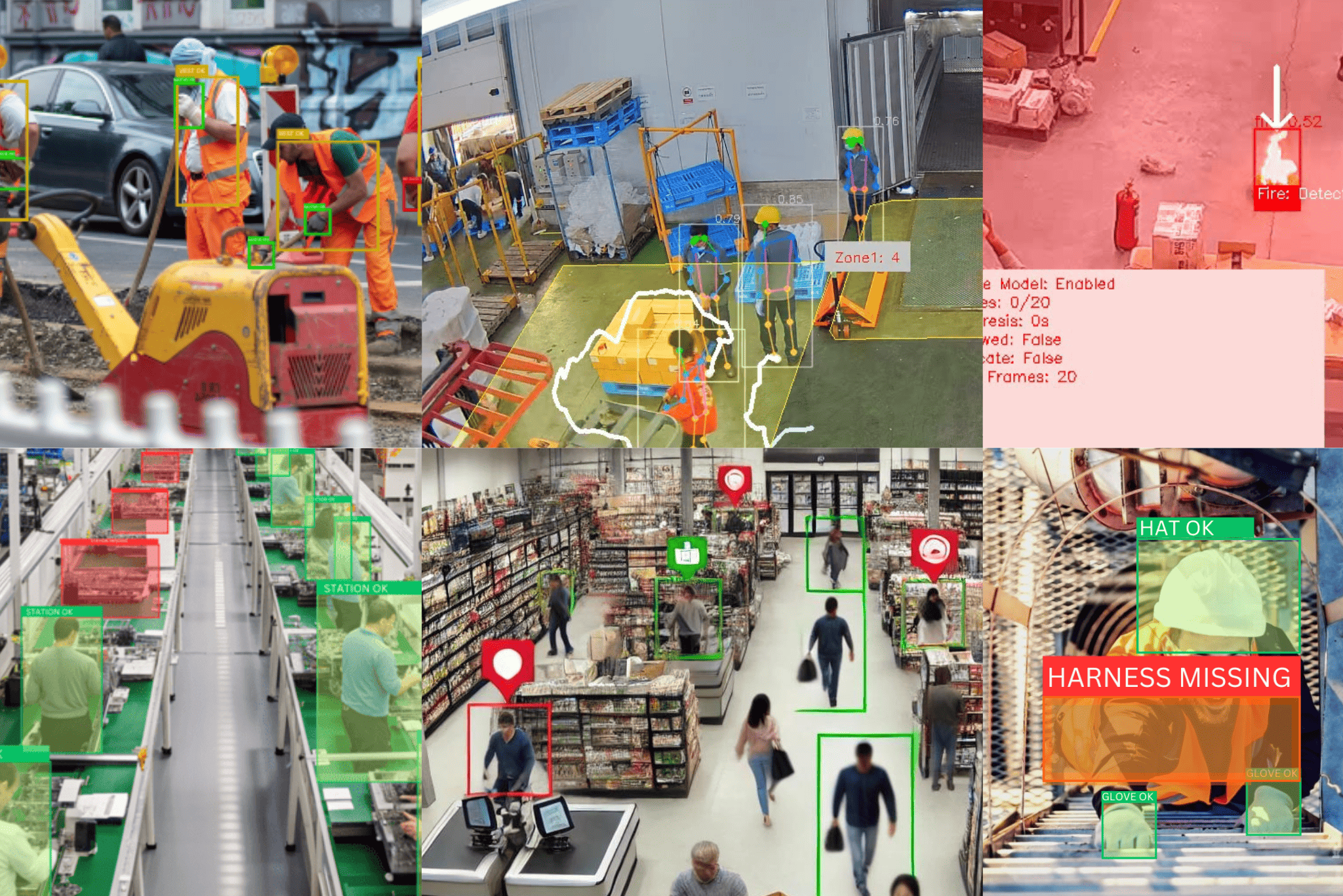 AI Safety Use cases shown
AI Safety Use cases shown
Visionify's Workplace Safety Solutions: Leading the AI Revolution
Visionify is taking the concept of AI for safer workplaces to the next level with its application suite that contains over 20 different AI-powered solutions. These applications address a wide range of safety challenges, empowering businesses to proactively protect their workers and optimize operations.
PPE Compliance Monitoring
Ensuring workers consistently follow PPE protocols is crucial for reducing workplace risks. Visionify's PPE Compliance Monitoring system detects when essential protective gear, such as helmets or gloves, is missing or improperly worn.
Key features:
- Sends real-time alerts to supervisors
- Generates detailed compliance reports
- Adapts to industry-specific PPE requirements
This solution helps companies significantly reduce PPE violations and foster a culture of safety and responsibility.
Restricted Area Monitoring
Maintaining control over access to hazardous or restricted areas is critical for preventing accidents and safeguarding employees. Visionify's Restricted Area Monitoring system uses advanced technology to detect unauthorized entry and alert the appropriate personnel.
Key features:
- Continuously monitors sensitive areas
- Notifies supervisors of any breaches
- Supports customizable access policies
By preventing unauthorized access, businesses can avoid incidents and ensure compliance with safety standards.
AI Staircase Safety
Staircases are common areas where accidents occur due to simple mistakes like skipping steps or rushing. Visionify's Staircase Safety Monitoring solution identifies risky behaviors and helps prevent these incidents before they happen.
Key features:
- Monitors stairways for unsafe actions
- Provides real-time alerts
- Generates trend analyses to highlight high-risk areas
This solution has been instrumental in significantly reducing staircase-related accidents, improving safety for everyone.
Mobile Phone Usage Monitoring
Distractions caused by mobile phone usage are a growing concern in the workplace, especially in high-risk areas. Visionify's Mobile Phone Usage Monitoring system detects unauthorized phone activity and ensures workers stay focused.
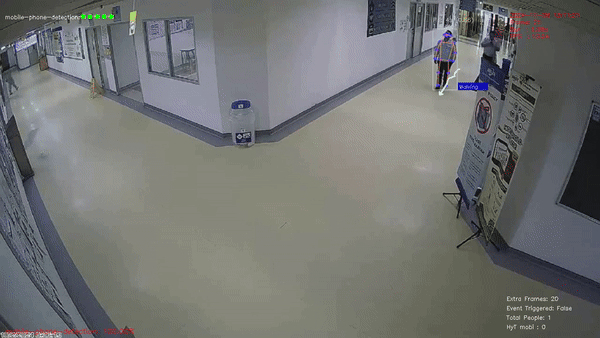 Mobile phone usage monitoring while walking
Mobile phone usage monitoring while walking
Key features:
- Flags phone usage in restricted zones
- Sends immediate alerts
- Tracks trends for managerial review
By addressing distractions, companies can reduce accidents and promote a safer, more productive environment.
Slip and Fall Detection
Slip and fall incidents are among the leading causes of workplace injuries. Visionify's Slip and Fall Detection system ensures these events are identified and addressed without delay.
Key features:
- Detects sudden movements or inactivity indicative of a fall
- Alerts safety teams immediately
- Monitors for non-responsiveness
Quick response times minimize the impact of injuries and ensure workers receive timely help.
Occupancy Monitoring
Maintaining optimal workforce density in critical zones is essential for safety and efficiency. Visionify offers solutions for both minimum and maximum worker monitoring to help companies achieve this balance.
Key features:
- Tracks the number of workers in designated areas
- Alerts supervisors if thresholds are breached
- Provides detailed reports for planning
Proper workforce density ensures compliance, reduces risks, and optimizes productivity.
Conclusion: The Transformative Power of AI in Workplace Safety
AI is not just a tool—it's a game-changer for workplace safety. By leveraging AI-powered solutions, businesses can move away from reactive measures and embrace proactive strategies that anticipate and prevent risks. This shift not only reduces accidents but also fosters a work culture where safety is ingrained in every process.
The trends we've explored—from real-time monitoring and predictive analytics to behavioral safety tools and seamless integration—represent the future of workplace safety. Organizations that adopt these innovations position themselves not only for enhanced safety performance but also for improved operational efficiency and regulatory compliance.
Visionify is proud to be at the forefront of this transformation, offering cutting-edge AI solutions tailored to the needs of modern workplaces. With a commitment to innovation, seamless integration, and scalable solutions, Visionify is an ideal partner in creating safer, smarter, and more efficient operations.
Your Next Step
If you're ready to take workplace safety to the next level, Visionify is here to help. Discover how our AI-driven solutions can transform your operations and create a safer environment for your team. Book a demo today or explore our offerings to see the future of workplace safety in action.
This article was published on January 13, 2025, and reflects the latest developments in AI technology for workplace safety.
Frequently Asked Questions
Find answers to common questions about this topic
Want to learn more?
Discover how our Vision AI safety solutions can transform your workplace safety.
Schedule a DemoSchedule a Meeting
Book a personalized demo with our product specialists to see how our AI safety solutions can work for your business.
Choose a convenient time
Select from available slots in your timezone
30-minute consultation
Brief but comprehensive overview of our solutions
Meet our product experts
Get answers to your specific questions
Related Articles
Subscribe to our newsletter
Get the latest safety insights and updates delivered to your inbox.


